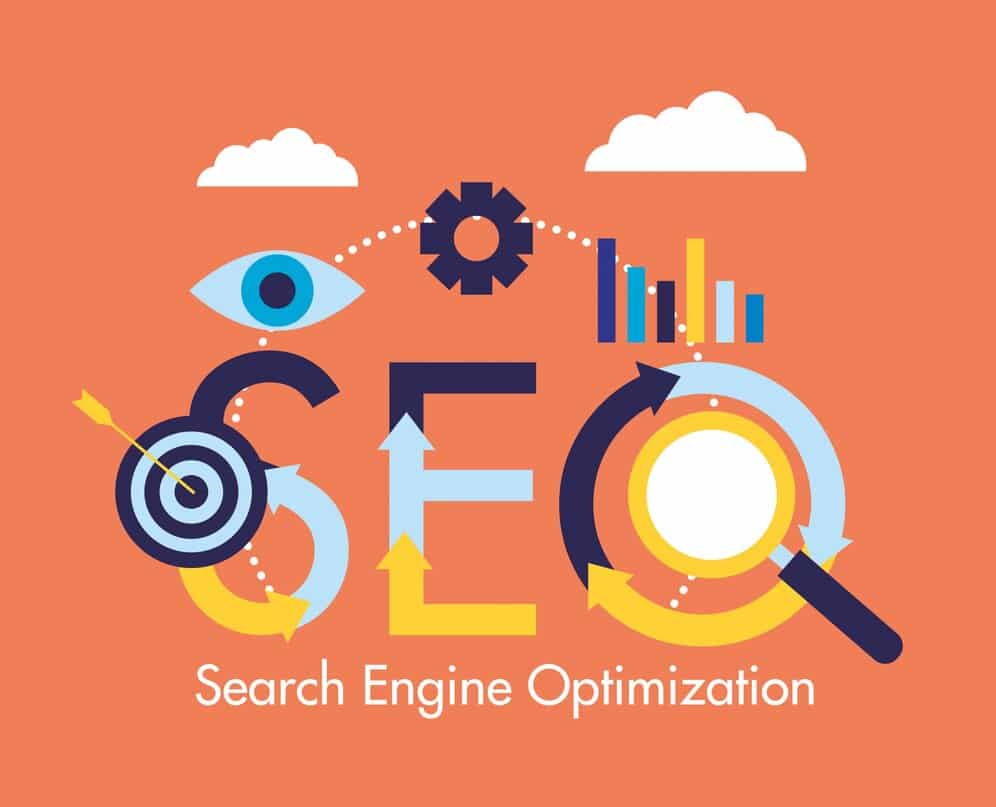Getting people to engage with your content is more important than ever. One of the best ways to achieve this is by using SEO, or Search Engine Optimization. This article will explore ten proven methods that can help you increase content engagement with SEO. By applying these strategies, you can make your content more visible and appealing to your audience.
Key Takeaways
- Keyword research helps you find the right words to attract readers.
- Optimizing your page makes it easier for search engines to find you.
- Using a good content management system keeps your content organized.
- Sharing your content on social media boosts its reach and visibility.
- Building backlinks from other sites can increase your content’s authority.
1. Keyword Research Tools
Keyword research tools are essential for finding the right words and phrases that people use when searching online. Using these tools can help you create content that attracts more visitors. Here are some popular keyword research tools:
- Google Keyword Planner
- SEMrush
- Ahrefs
These tools help you:
- Discover new keywords related to your topic.
- Analyze the competition for those keywords.
- Find out how often people search for specific terms.
Benefits of Using Keyword Research Tools
- Improved Content Strategy: By knowing what people are searching for, you can create content that meets their needs.
- Increased Traffic: Targeting the right keywords can lead to more visitors to your site.
- Better Engagement: Relevant content keeps readers interested and encourages them to stay longer.
Keyword research is not just about finding popular words; it’s about understanding your audience and what they want to learn.
2. On-Page Optimization Techniques
On-page optimization is crucial for improving your content’s visibility and engagement. By focusing on the right techniques, you can significantly enhance your website’s performance. Here are some key strategies:
1. Title Tags and Meta Descriptions
- Make sure your title tags are clear and include your main keywords.
- Write engaging meta descriptions that summarize your content and encourage clicks.
- Keep title tags under 60 characters and meta descriptions under 160 characters.
2. Header Tags
- Use header tags (H1, H2, H3) to organize your content.
- Include keywords in your headers to help search engines understand your content better.
- Ensure your H1 tag is unique for each page.
3. Internal Linking
- Link to other relevant pages on your site to keep visitors engaged.
- Use descriptive anchor text for your links.
- Aim for a balance between internal and external links.
4. Image Optimization
- Use descriptive file names and alt text for images.
- Compress images to improve loading speed.
- Ensure images are relevant to the content.
5. Content Quality
- Write clear, informative, and engaging content.
- Use bullet points and lists to make information easy to read.
- Update your content regularly to keep it fresh.
On-page optimization is not just about keywords; it’s about creating a better experience for your visitors.
3. Content Management Systems
Content Management Systems (CMS) are tools that help you create, manage, and modify content on your website without needing to know how to code. Using a good CMS can make your content more engaging and easier to find. Here are some popular CMS options:
- WordPress
- Joomla
- Drupal
Benefits of Using a CMS
- User-Friendly: Most CMS platforms are designed to be easy to use, even for beginners.
- Customization: You can change the look and feel of your site with themes and plugins.
- SEO-Friendly: Many CMSs have built-in features that help improve your site’s search engine ranking.
Key Features to Look For
When choosing a CMS, consider these important features:
- SEO Tools: Look for options that help with keyword optimization and meta tags.
- Responsive Design: Ensure your site looks good on all devices, especially mobile.
- Security: Choose a CMS that offers strong security measures to protect your content.
A good CMS not only helps you manage your content but also enhances the overall user experience, making it easier for visitors to engage with your site.
4. Social Media Integration
Social media is a powerful tool for boosting your content engagement. By connecting your content with social platforms, you can reach a wider audience and encourage interaction. Here are some effective ways to integrate social media into your content strategy:
1. Share Buttons
- Add share buttons to your content so readers can easily share it on their social media.
- Make sure these buttons are visible and easy to use.
- Consider using floating buttons that stay on the screen as users scroll.
2. Social Media Feeds
- Embed social media feeds on your website to showcase your latest posts.
- This keeps your content fresh and encourages visitors to follow you.
- It also provides social proof, showing that you are active and engaged.
3. User-Generated Content
- Encourage your audience to create content related to your brand.
- This can include reviews, photos, or stories shared on social media.
- Highlight this content on your website to build community and trust.
Integrating social media into your content strategy not only increases visibility but also fosters a sense of community among your audience.
5. Backlink Building Strategies
Backlinks are links from other websites that point to your content. They are important because they can help improve your site’s authority and visibility. Building quality backlinks can significantly boost your content’s reach. Here are some effective strategies to create backlinks:
1. Guest Blogging
- Write articles for other blogs in your niche.
- Include a link back to your site in your author bio or within the content.
- Choose reputable sites to ensure quality backlinks.
2. Create Shareable Content
- Develop infographics, videos, or unique research that others want to share.
- Promote your content on social media to increase visibility.
- Encourage others to link back to your content when they share it.
3. Engage in Online Communities
- Participate in forums and discussion groups related to your field.
- Share your expertise and link back to your content when relevant.
- Build relationships with other members to encourage backlinks.
4. Use Broken Link Building
- Find broken links on other websites.
- Reach out to the site owner and suggest your content as a replacement.
- This helps them fix their site while giving you a valuable backlink.
5. Collaborate with Influencers
- Partner with influencers in your industry.
- They can share your content with their audience, creating backlinks.
- This can also increase your credibility and reach.
Building backlinks takes time and effort, but the rewards can be significant. Focus on quality over quantity to see the best results.
6. User Experience Design
User experience (UX) design is all about making sure that visitors to your website have a great time while they are there. A good user experience can lead to higher engagement and more time spent on your site. Here are some key points to consider:
Key Elements of User Experience Design
- Navigation: Make it easy for users to find what they are looking for.
- Loading Speed: Ensure your website loads quickly to keep users from leaving.
- Mobile Friendliness: Design your site to work well on smartphones and tablets.
Benefits of Good UX Design
- Increased Engagement: Users are more likely to interact with your content.
- Lower Bounce Rates: Visitors are less likely to leave your site quickly.
- Higher Conversion Rates: A good experience can lead to more sales or sign-ups.
Good user experience design is not just about looks; it’s about how users feel when they interact with your site.
By focusing on these aspects, you can create a website that not only attracts visitors but also keeps them coming back.
7. Mobile Optimization Practices
Making your content mobile-friendly is essential. With more people using smartphones to browse the internet, optimizing for mobile can greatly improve user engagement.
Key Practices for Mobile Optimization
- Responsive Design: Ensure your website adjusts to different screen sizes.
- Fast Loading Times: Aim for pages to load in under 3 seconds.
- Simple Navigation: Use clear menus and buttons that are easy to tap.
Benefits of Mobile Optimization
- Increased Traffic: More users can access your content easily.
- Better User Experience: A smooth experience keeps visitors on your site longer.
- Higher Search Rankings: Search engines favor mobile-friendly sites.
Mobile optimization is not just a trend; it’s a necessity for reaching a wider audience and keeping them engaged.
8. Analytics and Tracking Tools
Analytics and tracking tools are essential for understanding how your content is performing. These tools help you see what works and what doesn’t, allowing you to make better decisions.
Key Benefits of Using Analytics Tools:
- Measure Engagement: Track how many people are reading your content.
- Understand Audience Behavior: Learn what your audience likes and how they interact with your site.
- Improve Content Strategy: Use data to create more of what your audience wants.
Popular Analytics Tools:
| Tool Name | Key Feature | Cost |
|---|---|---|
| Google Analytics | Free and comprehensive tracking | Free |
| SEMrush | SEO-focused insights | Paid |
| Hotjar | User behavior visualization | Free/Paid |
Using analytics tools is like having a map for your content journey. They guide you to success by showing you the right path.
9. Content Distribution Networks
Content Distribution Networks (CDNs) are essential for improving the speed and reliability of your website. They help deliver your content faster to users around the world. Here’s how they work and why they matter:
How CDNs Work
- CDNs store copies of your content in multiple locations.
- When someone visits your site, the CDN serves the content from the closest location.
- This reduces the time it takes for the content to load.
Benefits of Using a CDN
- Faster Load Times: Users experience quicker access to your content.
- Improved Reliability: Your site can handle more visitors without crashing.
- Better Security: CDNs can help protect against attacks.
Key Features to Look For
| Feature | Description |
|---|---|
| Global Reach | Multiple servers around the world |
| Scalability | Ability to handle traffic spikes |
| Analytics | Insights into user behavior and performance |
Using a CDN is a smart move for anyone looking to boost their website’s performance and user experience.
10. Video Marketing Strategies
Video marketing is a powerful tool that can significantly boost your content engagement. Using videos can help you connect with your audience in a more personal way. Here are some effective strategies to consider:
1. Create Engaging Content
- Focus on storytelling to capture attention.
- Use humor or emotion to make your videos memorable.
- Keep videos short and to the point, ideally under 2 minutes.
2. Optimize for SEO
- Use relevant keywords in your video title and description.
- Add tags to help categorize your content.
- Create eye-catching thumbnails to increase click-through rates.
3. Promote on Social Media
- Share your videos on platforms like Facebook, Instagram, and Twitter.
- Encourage viewers to share your videos with their friends.
- Use live videos to interact with your audience in real-time.
4. Analyze Performance
- Track views, likes, and shares to see what works.
- Use analytics tools to understand viewer behavior.
- Adjust your strategy based on feedback and data.
Video marketing is not just about making videos; it’s about creating a connection with your audience that keeps them coming back for more.
Frequently Asked Questions
What is SEO and why is it important?
SEO stands for Search Engine Optimization. It’s important because it helps your website show up in search results, making it easier for people to find your content.
How can keyword research help my content?
Keyword research helps you find words and phrases that people are searching for. Using these keywords in your content can attract more visitors.
What are on-page optimization techniques?
On-page optimization techniques are changes you make directly on your website, like using the right keywords, improving titles, and making sure your site is easy to read.
Why should I integrate social media with my content?
Integrating social media can help you share your content with a wider audience. It can also encourage people to engage with your posts.
What are backlinks and why are they important?
Backlinks are links from other websites to yours. They are important because they can improve your site’s authority and help it rank higher in search results.
How does user experience affect content engagement?
User experience affects how visitors interact with your site. If your site is easy to use and looks good, people are more likely to stay longer and engage with your content.







Leave a Reply